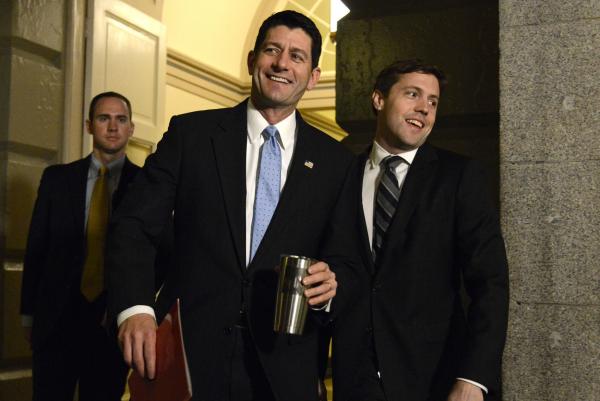If you’re one of 19 million Americans who might lose health insurance in the first year after Obamacare is repealed, you might want to read about the Republican plan.
In a recent town hall on CNN, House Speaker Paul Ryan fielded a question from a concerned citizen: “Why would you repeal the Affordable Care Act without a replacement?” In response, Ryan assured him that he and fellow Republicans would find an immediate replacement. One of the ideas he proposed for people with pre-existing conditions was “state high-risk pools.”
This idea was also articulated in the Republican “Better Way” proposal released in June of 2016. If you are one of the 19 million Americans who might lose health insurance in the first year after Obamacare is repealed, you might be curious what this plan means. Here at Lima Charlie, we are here to serve.
1. What is a state high-risk pool?
While it may sound like a dangerous but affordable option for your kids’ watersports activities, this is a plan that offers state-subsidized health coverage for people with pre-existing conditions.
2. How do they work?
They differ state by state, but in general the state offers financial support to people locked out of the health insurance market. People are eligible to apply if they lost group health insurance (from an employer), or if they have been denied insurance for a pre-existing condition. In the past, state high-risk pools are also a way to offer supplemental coverage to Medicare recipients
3. We’ve had them before?
State high-risk pools were in practice before the ACA came into effect in 2014. Before 1996, 25 states had high-risk pools with a combined enrollment of 91,054. In 2011, 31 states had a combined enrollment of 226,615 people.
4. Did they work?
This is debated. Although every state had a different version, some consistent problems emerged.
• Higher premiums than the regular market, usually by 150-200%.
• Lack of coverage. Nearly all state high-risk pools would not cover the costs to treat pre-existing conditions.
• Spending caps. Some of these pools imposed caps on how much an individual could spend in a lifetime, usually $1-2 million.
• Enrollment waiting periods. People would have to wait to apply for enrollment windows.
• Higher deductibles. In 25 programs, the plan option with the highest enrollment had a deductible of $1,000 or higher.
5. So why are the Republicans proposing it?
Republicans are aware of these problems. Their plan is to combine state high-risk pools with innovation grants and $25 billion dollars in federal funding to make sure people with pre-existing conditions can find health coverage and to reduce health care costs for the rest of the market. They would cap premiums and not allow enrollment waiting lists for these programs.
6. What’s the catch?
There are concerns whether or not Congress would approve the requisite $25 billion dollars in federal funding. The CO-OPs created by the ACA were supposed to receive $10 billion in federal funding, but ended up with a quarter of that amount as a loan rather than a grant. As a result, many of these co-ops closed at the end of 2015. Without federal support, state high-risk pools would suffer the same way and be forced to raise prices on their consumers. This article from the Kaiser Family foundation also argues that state high-risk pools are too expensive to work in the way Republicans want them to.
7. So what do I do?
Join the military, get wounded, honorably discharged, and apply for VA coverage. Oh, right.

Meanwhile, thousands rallied today, led by Sen. Bernie Sanders and Sen. Elizabeth Warren in support of Obamacare.
If you would like to read more, these are the primary articles I referenced.
• Health insurance and high risk pools, Louise Norris, Healthinsurance.org
• High Risk Pools for Uninsurable Individuals, Karen Pollitz, Kaiser Family Foundation
David Polsdorfer, Lima Charlie News
David Polsdorfer served in the United States Navy from 2008 until 2013 as a Cryptologic Technician Collector. He worked in the intelligence community at NIOC Hawaii and completed one tour to Afghanistan in 2011 as an LLVI operator. In 2014 he was selected to be part of The Daily Show’s Veteran Immersion Program and continued there as an intern in the fall. In 2015, he worked as a production assistant with Sara Taksler and Sarkasmos Productions, LLC on the documentary film, Tickling Giants. He recently received his Bachelor’s from Columbia University in Political Science. He writes and edits. Follow David on Twitter @DPolsdorferLC
Lima Charlie provides global news, insight & analysis by military veterans and service members Worldwide.
For up-to-date news, please follow us on twitter at @LimaCharlieNews


![Image The Week in U.S. Politics [Lima Charlie News]](https://limacharlienews.com/wp-content/uploads/2018/03/Lima-Charlie-Week-in-Politics-01-480x384.jpg)





![Image Memorial Day may soon be a remembrance of democracy and those who had the courage to defend it [Lima Charlie News]](https://limacharlienews.com/wp-content/uploads/2018/05/Memorial-Day-may-soon-be-a-remembrance-of-democracy-and-those-who-had-the-courage-to-defend-it-Lima-Charlie-News-480x384.png)
![The Mind of Bolton - AUMF and the New Iran War [Lima Charlie News]](https://limacharlienews.com/wp-content/uploads/2019/05/Inside-the-mind-of-Bolton-Lima-Charlie-News-main-01-480x384.png)
![Image The Week in U.S. Politics [Lima Charlie News]](https://limacharlienews.com/wp-content/uploads/2018/03/Lima-Charlie-Week-in-Politics-01-150x100.jpg)
